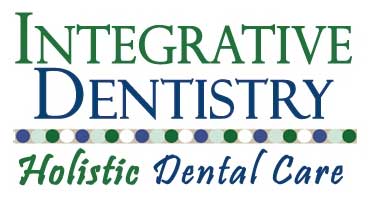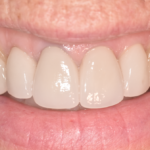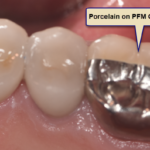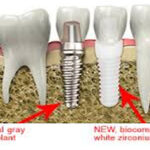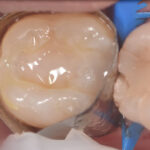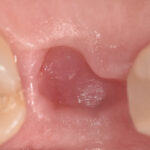The manner in which your teeth come together and how well you chew is known as your ‘bite’. Occlusion is the study of the bite and malocclusion basically means you have an imbalanced or malfunctioning bite with high spots and interferences.
Problems with your bite can result from missing teeth, crowding of or spaces between your teeth, over or under developed jaw bones, and improper eruptions of teeth resulting in crossbites, overbites or underbites.
Bite issues if left unaddressed can lead to further problems including tooth wear and breakage, tooth loss and infection, and temporomandibular joint (TMJ) dysfunction. The short version of this is TMD which basically means malfunction of the jaw joint. This can lead to:
- Wearing of the tissues, ligaments and bone in the jaw joint
- Grinding and clenching of your teeth during the day or at night and
- Clicking, popping and pain in the joint itself
If you have any of these symptoms, you should see a dentist who can give you proper support and make a clear appliance that you can wear to help protect your teeth and lessen the pain in the jaw joint. In more extreme cases of crowding, braces are sometimes called for.
The other issue with the bite is recent dental work which may be too high. Even if you don’t feel it while at the dental office a high spot may become noticeable later on. High spots are not only a nuisance but they can also produce pain and soreness in the tooth that was just worked on. This pain usually will not go away until it is adjusted and may even hurt enough for you and your dentist to think you may need a root canal.
So make sure your dentist is careful with adjusting your bite while you are in the office and gets you right in again if there is any pain or discomfort in the tooth lasting more than a couple of days. It may very well be the bite. You don’t want to cause a root canal if the problem is as simple as adjusting the filling or crown you recently had placed.

Carey O’Rielly DDS has been a practicing dentist for 35 years. He went to USC Dental School and Duke University for his undergraduate degree. He grew up in Laguna Beach and now lives in La Costa with his wife Victoria, who runs his office.
He began his career by owning and operating a network of six offices in the San Francisco Bay Area. Presently he owns a private holistic practice in North County San Diego’s Encinitas.
Dr. O started looking for solutions to his health challenges that resulted from the stress and environmental toxicity that built up over a ten year period running his dental network. He has dedicated himself to learning about oral systemic problems and how dentistry can affect your health. He has applied what he has learned over the last twenty years to ensure he, his staff and his patients are protected from the chemicals and toxic materials found in most dental offices. He has produced an environmentally friendly office that is also peaceful and calm.
He is an expert on dental materials having looked at hundreds of biocompatibility lab tests over the years. He has identified the most bio-friendly materials to use in his practice and which dental materials can be used to replace metal fillings and crowns, including BPA free and fluoride free ‘white’ fillings. He also uses metal-free Zirconia or ceramic implants and PRF (platelet-rich fibrin) grafting materials which come from the patient’s own blood.
Dr. O’Rielly teaches C.E. courses on the systemic effects of gum disease. He is an expert in using phase contrast microscopy for analyzing dental infections, where he shows patients what kind of microbes, i.e. bacteria, amoeba, and yeasts like candida are populating the mouth and affecting the body as a whole.
He has an educational blog and is writing a book on dental health called ‘Hidden Dental Infections: Healing Root Canals and Infected Teeth with the Erbium Laser’ where he discusses dental nutrition, toxic dental materials and the effects of old root canals on inflammation and overall health.
